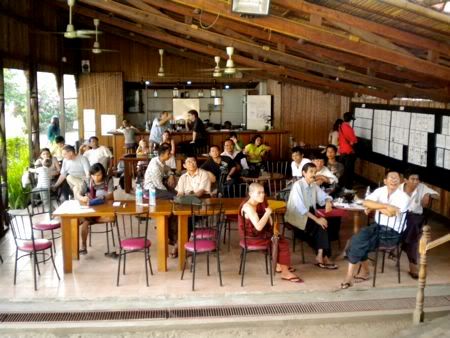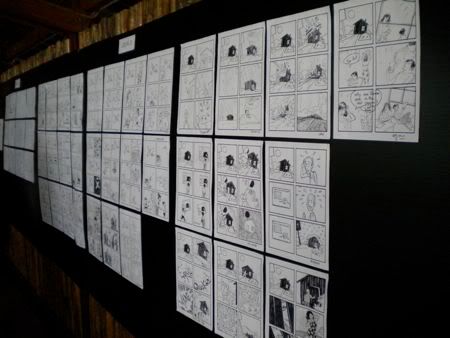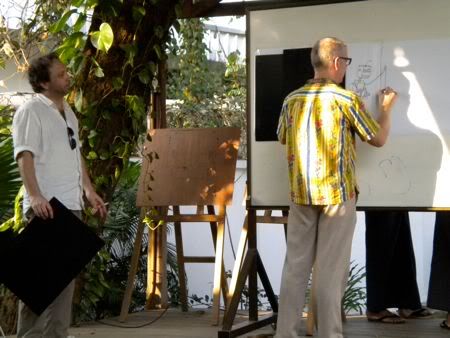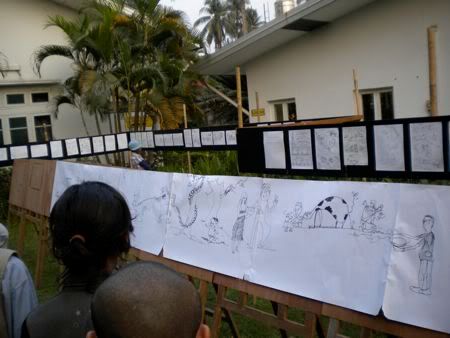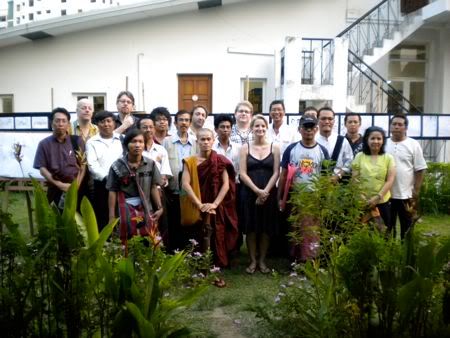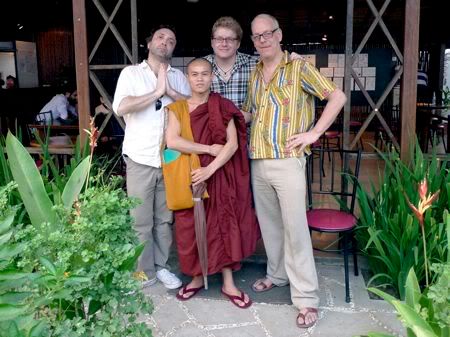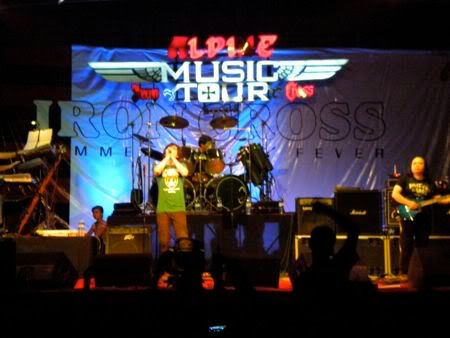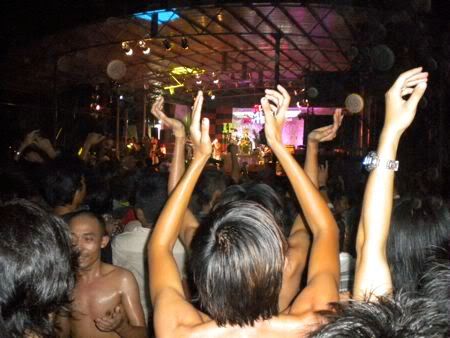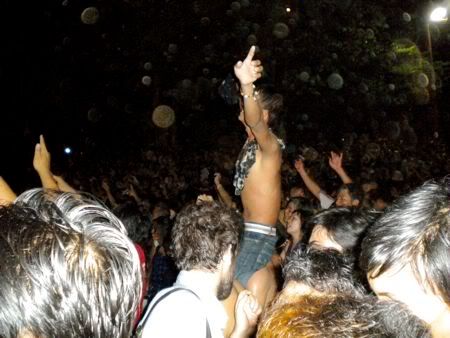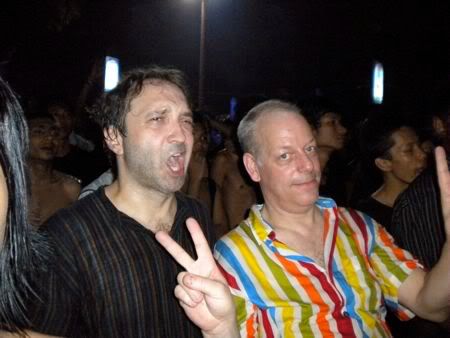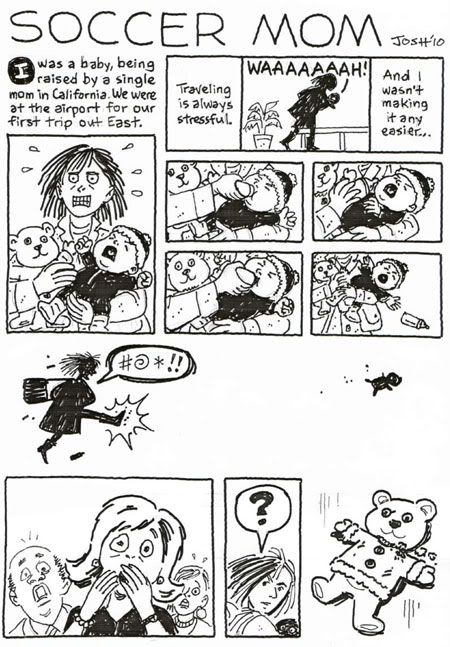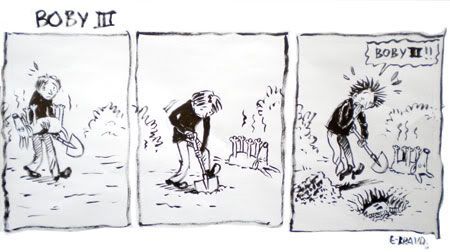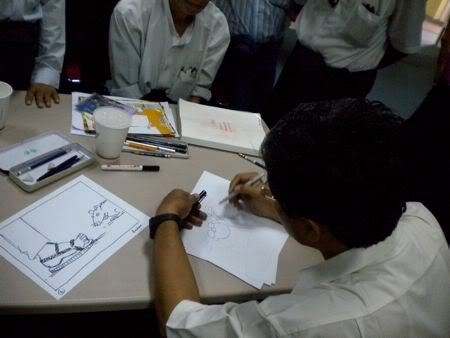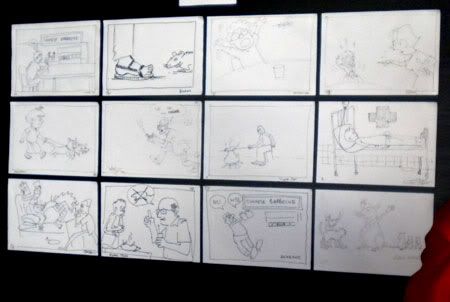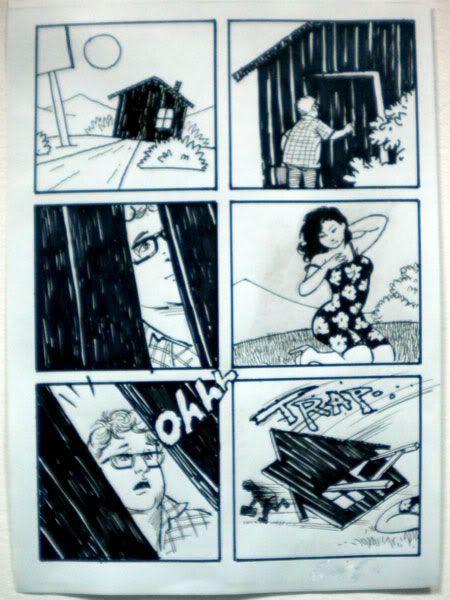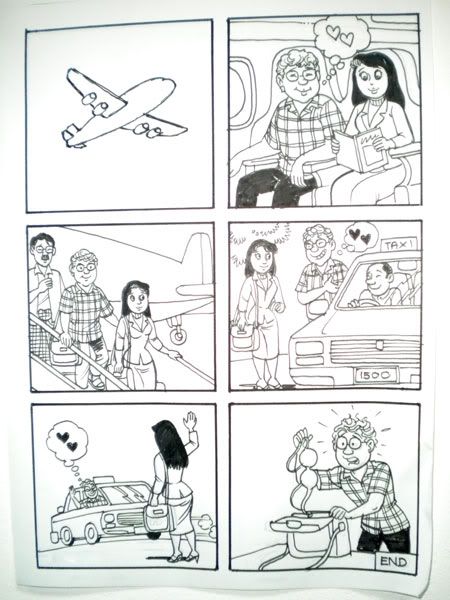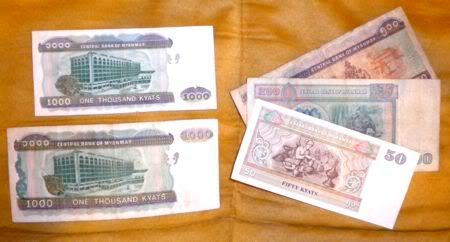Friday, Oct. 8
Leaving for the airport in an hour. Using all of my packing/rolling techniques right now. No time to shave; I will shave in Cairo.
OK, Delta Airlines wins the worst-ever international check-in/baggage drop award. Buckle in for the 10-hour flight.
I’m here. Landed in Cairo, was driven to the hotel, met Mike, the Cultural Affairs rep from the Embassy, changed money, and showered. My hotel is the Semiramis InterContinental, a five-star establishment about six stars above my usual travel accommodations. There are many Spanish tourists here. And older ladies in tour groups flirting with the hotel waiters. Later, on Mike’s advice, I find some delicious Lebanese food and take a felluca ride on the Nile before turning in for the night.
Crossing the roads here is exactly like Frogger — dash into traffic, wait, jump forward again. The key is never go backwards or you go splat.
Saturday, Oct. 9
SaBAH el-KHEYer. Studying up on my Arabic phrases.
Baseball breaks your heart. (It’s designed that way.) I’m sitting here in Cairo about to see the Pyramids and I’m depressed because the Giants blew a 4-0 lead to lose to the Braves in 11 innings.
Heading toward the Pyramids from central Cairo, they shimmer into view through the haze like something left by visitors from another planet. My guide, Fareg, is terrific — 31 years as an Egyptologist and anthropologist. (He also takes some funny pictures of me in front of the various sights.) The pyramids are just as stunning up close, and I am really blown over by the Sphinx. Something about the grandeur and dignity of the monument really touches me. On the plateau above the Pyramids, I take a short came ride out into the Sahara. The poor beast stumbles on a Coke bottle and almost pitches me into the sands. Ootini!
After the Pyramids and before our visit to the stately Mosque-Madrassa of Sultan Hassan (featured on the Egyptian one-hundred pound note), I stop for a lunch of kushari and a mint tea with my driver and guide.
Many Muslim men here have ash-colored bruises on their foreheads. This comes from their five-times-a-day praying. These men press their foreheads to the floor so vociferously that a permanent bruise develops. This is seen as a sign of their particularly pious nature.
My A.D. presentation at the independent gallery/art library the Townhouse Gallery goes really well. Most of the crowd of 40 or so speak English fluently and are basically familiar with graphic novels. There are even some American ex-pats in the room. Given the audience’s political sympathies, they particularly appreciate my call-out of Joe Sacco as a major influence. Afterward, I do a 15-minute interview with Chitra Kalyani of Daily News Egypt. (She has really done her homework on me!) And then Mike takes me to a Cairo street food establishment and then a beer at the Stella Bar, a nearby watering-hole frequented by old Nasserites.
Sunday, Oct. 10
Take the Metro to Coptic Cairo. I walk in to a beautiful singing liturgy in the round Church of St. George. I take a photo of what appears to be the Holy Termite Mound. At the Metro station on the way back, I end up in the middle of the platform where the ladies-only cars are situated. Off-limits! By the time I run down the station to a suitable car the doors are closing, and I have to wait for the next train. Fortunately, they come along quite frequently.
Later, I find myself in the stunning, huge Egyptian Museum, where I marvel at the ghoulish opened-up mummies of Ramses II and other ancient Egyptian rulers. Then I see the fabled relics of King Tutankhamen. And now I see what the big deal about King Tut’s tomb is. Un-be-lieve-able. Somewhere along the way, I realize I’ve been wearing my Tintin Cigars of the Pharaoh shoulder bag all around Cairo. Respectful homage or inappropriate?
After lunch, I am driven over to Cairo University for another presentation, this time for Mass Communication students. Cairo U. has an astonishingly large student-body of 250,000 kids, which must be one of the largest in the world. After sharing a tea with the Mass Comm dean, I am shuffled upstairs to the class, which has about 50 kids, most of them hijab-wearing girls. This crowd is much less knowledgeable about comics, but their English is surprisingly good and they ask some good questions at the end. As with the crowd the night before, everyone wants to know how I like Egypt and when they can expect to see an Egypt-themed graphic novel from me. When I explain that it took two-and-a-half years to do A.D., and a whopping ten years to do A Few Perfect Hours, they revise their expectations a bit.
For my last night in Cairo, I head over to Khan el-Khalili to check out the famous back-alleys bazaar. It is wonderful to trek down the tiny streets, packed with vendors; it is annoying and depressing to fight off the sales pitches from the guys hawking their cheesy tourist-targeted wares. I find respite — and some good kofta — in the Naguib Mahfouz Cafe, and stop by the Al Fishawy Cafe to check out one of the world’s oldest coffee houses.
A bizarre thing happens in the bazaar. An American family from one of the many tourist buses causes a commotion when the dad — a stocky 50-something — begins bellowing at his son. "Jeff! Jeff, goddammit! Hurry up or they’ll leave without us!" Predictably, this causes a huge crowd (mostly of vendors) to gather around to see the fun. Jeff, a 20-ish spitting image of his dad, is understandably humiliated at his father’s tirade, and refuses to hurry. This only gets the dad angrier, and he goes crazy, running up to his son and pushing him along the cobblestone alley. The son pushes back, and before anyone knows it, they are practically wrestling in the street. "I’ll fucking break you in half," the father yells. The crowd is hopping with glee. It’s nuts. A member of the white-uniformed Egyptian tourist police is standing by, but he is conflicted. His job is to prevent tourists from being harassed or assaulted by Egyptians; he has no precedent for interrupting internecine battles. Finally, the dad and his wife run off, leaving Jeff alone. He trudges slowly by in the same direction. I feel bad for the kid to have such an asshole for a father.
Monday, Oct. 11
Farewell, Egypt. I hope to return for a longer visit. On to the next leg of my trip. Algeria!



